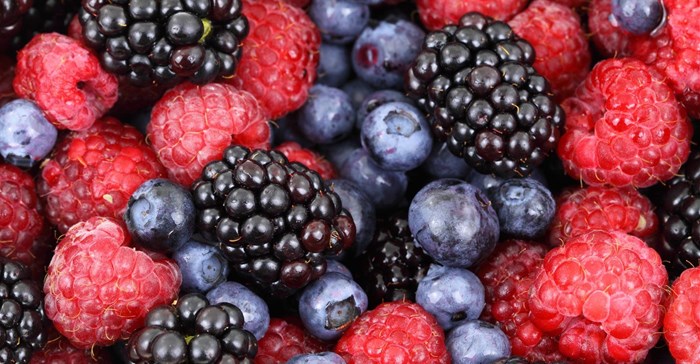
The revenue of the market of frozen fruit, juice, and vegetable in the US amounted to $11.5bn in 2018, approximately reflecting the previous year. This figure reflects the total revenues of producers and importers (excluding logistics costs, retail marketing costs, and retailers' margins, which will be included in the final consumer price).
Overall, consumption of frozen fruit, juice, and vegetable continues to indicate a relatively flat trend pattern. The growth pace was the most rapid in 2015, with an increase of 2.2% year-on-year. In that year, the market for frozen fruit, juice, and vegetable reached its peak level of $12.2bn. From 2016 to 2018, the growth of the market for frozen fruit, juice, and vegetable failed to regain its momentum.
In value terms, production of frozen fruit, juice, and vegetable stood at $11.4bn in 2018. Overall, the production of frozen fruit, juice, and vegetable continues to indicate a mild contraction.
Frozen vegetables ($8.1bn) constituted the leading product category in terms of the total output. The second position in the ranking was occupied by frozen fruits, juices, ades, drinks, and cocktails ($3.1bn).
From 2013 to 2018, the average annual growth rate of the production volume of frozen vegetables amounted to -2.8%. With regard to the other produced products, the following average annual rates of growth were recorded: frozen fruits, juices, ades, drinks, and cocktails (+2.9% per year) and other frozen fruit, juice, and vegetable manufacturing (+2.6% per year).
In 2018, exports of frozen fruit, juice, and vegetable from the US stood at 939k tonnes, waning by -4.6% against the previous year. Overall, exports of frozen fruit, juice, and vegetable continue to indicate a relatively flat trend pattern.
In value terms, exports of frozen fruit, juice, and vegetable stood at $1.1bn (IndexBox estimates) in 2018.
Japan (300K tonnes) was the main destination for exports of frozen fruit, juice, and vegetable from the US, accounting for a 32% share of total exports. Moreover, exports of frozen fruit, juice, and vegetable to Japan exceeded the volume sent to the second major destination, South Korea (94k tonnes), threefold. The third position in this ranking was occupied by China (93k tonnes), with a 9.9% share.
From 2013 to 2018, the average annual growth rate of volume to Japan was relatively modest. Exports to the other major destinations recorded the following average annual rates of exports growth: South Korea (-1.7% per year) and China (-2.7% per year).
In value terms, Japan ($328m) remains the key foreign market for frozen fruit, juice, and vegetable exports from the US, comprising 30% of total exports of frozen fruit, juice, and vegetable. The second position in the ranking was occupied by South Korea ($114m), with a 10% share of total exports. It was followed by China, with a 9.2% share.
The average export price for frozen fruit, juice, and vegetable stood at $1.2 per kg in 2018, levelling off at the previous year. Overall, the export price for frozen fruit, juice, and vegetable continues to indicate a relatively flat trend pattern.
There were significant differences in the average export prices for the major foreign markets. In 2018, the country with the highest export price was China, Hong Kong SAR ($1.8 per kg), while the average price for exports to the Philippines ($1 per kg) was amongst the lowest.
From 2013 to 2018, the most notable rate of growth in terms of export prices was recorded for supplies to China, Hong Kong SAR (+8.2% per year), while the export prices for the other major destinations experienced more modest paces of growth.
Imports of frozen fruit, juice, and vegetable into the US stood at 1 million tonnes in 2018, increasing by 20% against the previous year. The total import volume increased at an average annual rate of +9.7% from 2013 to 2018; however, the trend pattern indicated some noticeable fluctuations being recorded in certain years.
The growth pace was the most rapid in 2018 when it surged by 20% against the previous year. In that year, imports of frozen fruit, juice, and vegetable reached their peak, and are likely to continue its growth in the immediate term.
In value terms, imports of frozen fruit, juice, and vegetable stood at $1.4bn (IndexBox estimates) in 2018.
China (142k tonnes), Brazil (104k tonnes) and Mexico (97k tonnes) were the main suppliers of imports of frozen fruit, juice, and vegetable to the US, together comprising 34% of total imports.
From 2013 to 2018, the most notable rate of growth in terms of imports, amongst the main suppliers, was attained by Mexico (+65.0% per year), while the other leaders experienced more modest paces of growth.
In value terms, the largest frozen fruit, juice, and vegetable suppliers to the US were Mexico ($179m), Brazil ($173m) and China ($124m), together comprising 33% of total imports.
The average import price for frozen fruit, juice, and vegetable stood at $1.4 per kg in 2018, surging by 3.6% against the previous year. In general, the import price for frozen fruit, juice, and vegetable continues to indicate a slight curtailment.
Import prices varied noticeably by the country of origin; the country with the highest import price was Chile ($2.8 per kg), while the price for Poland ($674 per tonne) was amongst the lowest.
From 2013 to 2018, the most notable rate of growth in terms of import prices was attained by Ecuador (+3.0% per year), while the import prices for the other major suppliers experienced more modest paces of growth.
The Pictsweet Company, Citrus World, McCain Foods USA, Norpac Foods, Peterson Farms, Twin City Foods, National Frozen Foods Corporation, Cutrale Citrus Juices USA, Wawona Frozen Foods, Townsend Farms, Smith Frozen Foods, Stahlbush Island Farms, Langer Juice Company, Louis Dreyfus Citrus, Dole Packaged Foods, Birds Eye Foods, Seabrook Brothers & Sons, Rainsweet, H.J. Heinz Company, Hermiston Foods, Kd Acquisition I, Conagra Foods Lamb Weston, Eckert Cold Storage Company, McCain USA, Ocean Spray International.
Source: IndexBox AI Platform.